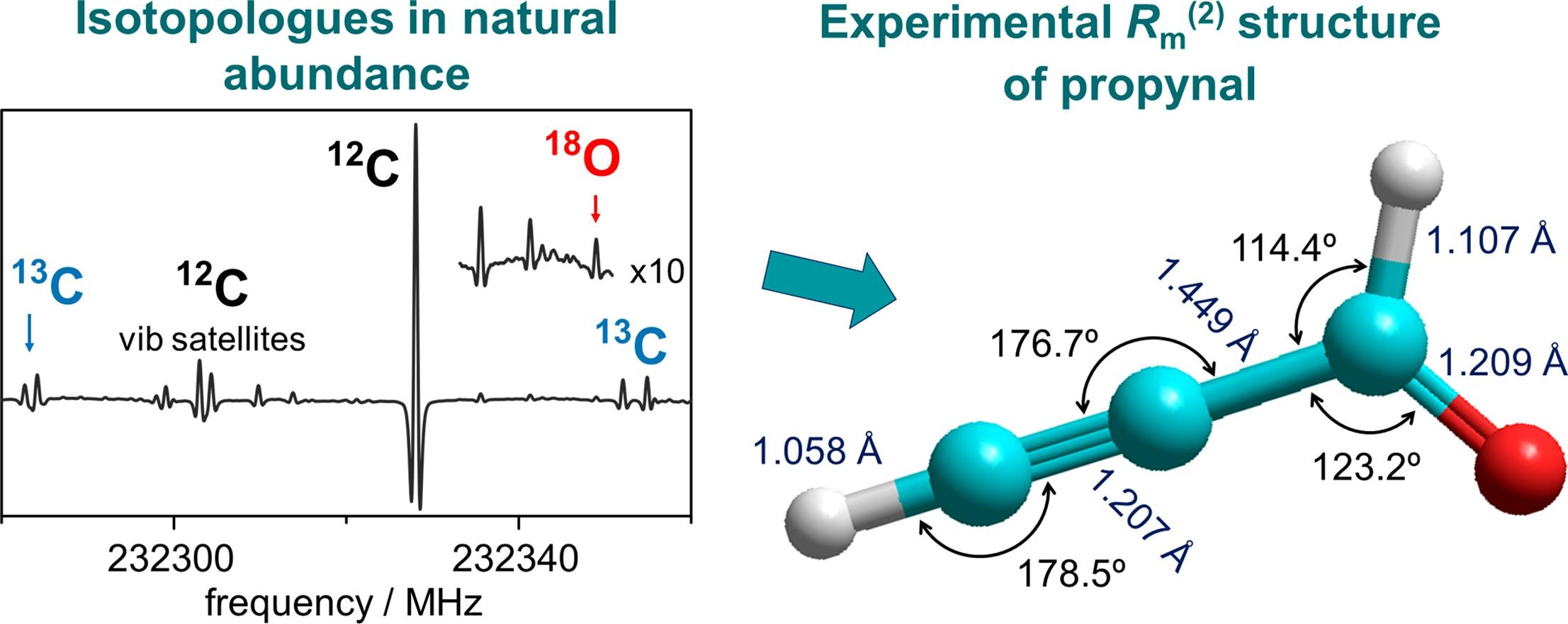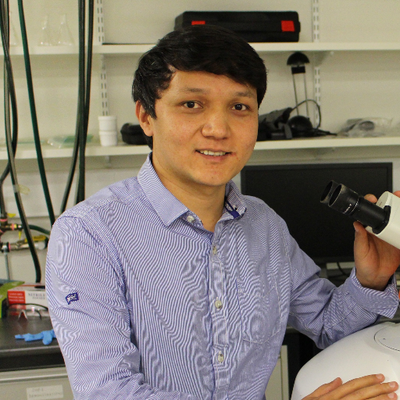Millimeter wave spectroscopy of propynal isotopologues and structure determination
Published:

Abstract: Rotational transitions of propynal (HCCCHO) have been measured in the 150–900 GHz region by millimeter wave spectroscopy and in the far infrared region by high resolution FTIR spectroscopy using a synchrotron source. For the parent isotopologue, assignment of MMW transitions up to very high quantum numbers (J = 100, Ka = 25) reveals evidence of extensive perturbations in the ground vibrational state due to Fermi-asymmetry resonance with an excited vibrational state. A fit to nearly 3000 ground state transitions yields effective constants that are suitable for describing relatively unperturbed rotational levels up to Ka = 13. Over 1000 transitions were assigned and fitted for each singly substituted 13C species and nearly 400 transitions for the 18O variant. Re-analysis of literature data on deuterated species, aided by centrifugal distortion constants from hybrid density functional theory calculations at the B2PLYP/aug-cc-pVTZ level, provides a further set of rotational constants. This allows determination of a Rm(2) structure for propynal with the following geometry: r(C≡C) = 1.2066(15), r(C-C) = 1.4486(14), r(CO) = 1.2087(10), r(C-H) = 1.1069(8), r(C-H) = 1.0578(13), θ(CCC) = 176.71(22), θ(OCC) = 123.23(7), θ(HCC) = 114.43(31), θ(HCC) = 178.45(16). A new Rs structure was also derived.
